#tuileries palace
Text
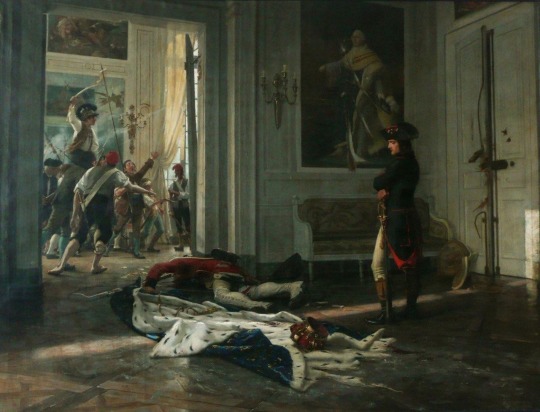
Napoleon Bonaparte in Tuileries - 10th August, 1792
by Maurice Réalier-Dumas
In this scene a young Napoleon Bonaparte considers the royal mantle and crown left unattended on the palace floor, beside a dying Swiss Guard.
#napoléon bonaparte#napoleon bonaparte#art#maurice réalier dumas#tuileries#palace#tuileries palace#french revolution#french revolutionary wars#history#france#crown#mantle#robes#royal#napoleon#bonaparte#royalty#europe#european#swiss guard#revolutionaries
196 notes
·
View notes
Text

Napoleon standing in the ruins of the Tuileries palace in Paris goes kind of hard ngl
#Napoleon#job#Jacques Onfroy de Bréville#Jacques Marie Gaston Onfroy de Bréville#napoleon bonaparte#frev#French Revolution#1792#tuileries#Tuileries palace#napoleonic era#19th century#first french empire#french empire#napoleonic#bonaparte#France#la révolution française#art#illustration#cartoon#palace#1790s#1700s#18th century#first french republic
174 notes
·
View notes
Text

Tuileries Palace after the arson during the 1871 Paris Commune
French vintage postcard
#historic#photo#briefkaart#1871#vintage#sepia#photography#carte postale#paris#paris commune#postcard#palace#postkarte#commune#postal#tarjeta#tuileries palace#ansichtskarte#old#french#arson#ephemera#postkaart#tuileries
22 notes
·
View notes
Text
the Red Man of Tuileries
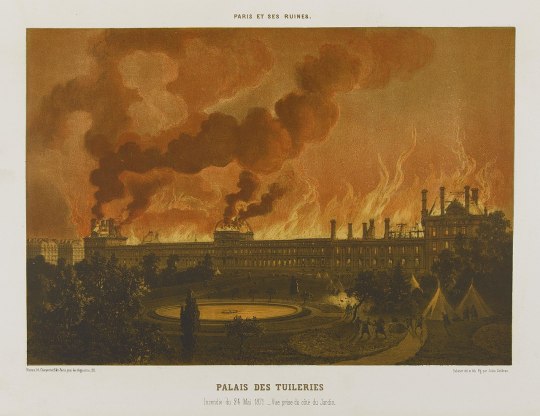
It was late in May of 1871 that a motley group of workers, under the orders of Jules Bergeret, took barrels of pitch, tar and other accelerators and marched up the steps of the Palace of Tuileries. All day long, fighting had raged in front of the grand building as the French army fought the Paris Commune. What had started off as a dream for a better world, or at least a better Paris, only a few short months ago was coming to an end and like hell were the men and women of the Paris Commune going to retreat without burning everything, and everyone, to the ground behind them. Into the beautiful hallways that had once housed royalty and ambassadors from around the world, marched the team of workmen, painting everything with turpentine, petroleum and tar as they swept through, moving from carved room to carved room. In the center dome of the palace, more men laid explosives. It was evening and the growing shadows stretched long and flickering in the approaching darkness of the night. Breaking up into smaller and smaller groups to reach each of the rooms, the workers heard footsteps on the stone floors behind them that moved when they weren't, echoes, dry and dusty that skipped strangely through the hollows of the rooms they roamed through. More than one of them caught glimpses from the corners of their eyes, right on the edge of their vision, the flicker of red cloth, dark as old blood, there and gone in a blink. The evening air was cool and the work had the sweat trickling down their backs but that didn't account for all of the chills that went down their spines. Jobs finished, they tried not to make it obvious how quickly they hurried out of the empty palace, tried not to show too much of their relief when they were once again outside of its walls, surrounded by their companions. The word was given, the first torch laid to beautifully decorated walls. Fire sprang up, as if it had always been there just waiting for this moment and engulfed the once majestic Palace of Tuileries, consuming it as if it were made of paper instead of stone. The fire burned for two days and if anyone saw a red dancing figure of a man watching them from its smoke and flames, they didn't share the story with anyone else. The Paris Commune was dead and its members had other, more immediate problems, like surviving, to deal with. The Red Man of Tuileries had, finally, stood watch over the last tragedy of Tuileries.
But not the first.
The Palace of Tuileries was built in 1564 by Catherine de' Medici, after her husband, Henry II, king of France, died. It was going to be her own personal residence, as a royal widow, and no expense was spared toward her future comfort. This was not to be the case however.
According to some legends, a man she employed named, aptly, either Jean the Skinner or Jean the Flayer, who carried out political assassinations for her found out a bit too much for his employer's comfort and Catherine had her assassin assassinated. When his killer went back into the Tuileries garden to retrieve the body for burial, it was missing however - and the Palace of Tuileries had a new ghost, one that appeared just before each new royal disaster.
In another branch of the same story, the Red Man had never served Catherine at all. When the palace had finally been nearing completion, Catherine, ready to move in and visiting for last minute decisions, had found someone else already living there. A small man, dressed all in red, cloven hooves for feet optional. Catherine wasn't about to share her home with someone like that and she left, never to return.
A civil war between the Protestants and Catholics that burst out and engulfed Paris in 1588 might have had something to do with that as well. Or perhaps it was just the first time the Red Man would reveal his purpose.
No matter where he came from, from that point on, the Red Man of Tuileries would show up just before disasters, glimpsed briefly in the halls of the palace only to disappear when noticed.
The Red Man was spotted in the halls of Tuileries just before Henry IV was assassinated in 1610. Several of Marie Antoinette's ladies were reported to have seen him only days before the August 10th Insurrection in 1792. He was spotted again right before Louis XVI's execution in 1793. The last recorded mention of the Red Man happened only days before the burning of the Tuileries in 1871, when the custodian of the place saw the figure standing in a pose of deep sorrow, not once, but twice in the same night before he vanished.
The Red Man's most talked about appearance however involved Napoleon Bonaparte. Stepping outside of his usual job of being a harbinger of doom, as well as actually leaving Tuileries for the first time, the Red Man apparently appeared to Napoleon three times. The first time was said to be just before the Battle of the Pyramids while France was invading Egypt in 1798. Legends say that the Red Man promised Napoleon ten years of success, later to be buffered by an additional five, but at the end of that time period, Napoleon would never again be successful in military matters. The Red Man was said to have showed up after the Battle of Wagram in 1809 to warn Napoleon against setting foot in Russia. In January of 1814 the Red Man appeared one last time to Napoleon, warning him that his time was running out. That was the last time legend says the Red Man appeared to Napoleon and it was also, shortly afterward, the end of Napoleon's rein.
The Red Man of Napoleon's contract and the Red Man of Tuileries seem to serve very different purposes and so I wonder if the stories surrounding the two became a mesh of two different 'red men with supernatural powers hanging around French leadership'. Rumors said that Napoleon often spoke of a 'red star' he was under that led him to victory. Either way, the Red Man of Tuileries hasn't been seen since the fire that gutted the palace in 1871. Maybe the destruction of the palace finally laid him to rest. Or maybe he's waiting for royalty to return to France so he can again lurk in their hallways, waiting to warn of danger and, perhaps, offer bargains of power to those egotistical enough to accept.

#tuileries#palace of tuileries#napoleon#superstition#folklore#red man#france#french folklore#marie antoinette#catherine de medici#burning of tuileries#ghost stories#harbinger#cryptid
26 notes
·
View notes
Text

Tuileries Garden (Jardin des Tuileries), Paris, France: The Tuileries Garden is a public garden between the Louvre and the Place de la Concorde in the 1st arrondissement of Paris, France. Created by Catherine de' Medici as the garden of the Tuileries Palace in 1564, it was opened to the public in 1667 and became a public park after the French Revolution. Wikipedia
222 notes
·
View notes
Text


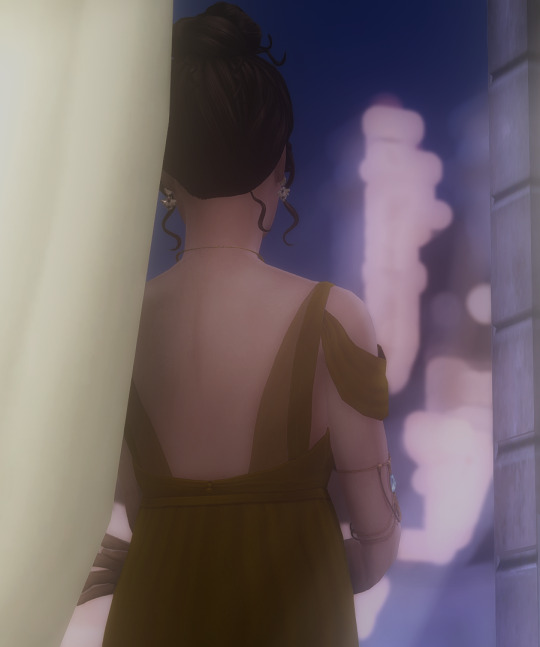
Night over the Tuileries Palace
I wanna post so bad but I'm extra busy these days Y_Y
Here's a little preview to the post I wanted to do some time ago.
90 notes
·
View notes
Text









⚜ Le Cabinet Noir | Episode III, N°1 | Tuileries palace, 14 Thermidor An 230
Emperor Napoleon V and his wife Charlotte are worried about the presence of Louis Simparte on French soil. He is a notorious anti-imperialist, a sort of black sheep of the family. It seems he has decided to move back to Francesim. He has published a book "Freedom" in which he recounts his family's mistreatment of him, culminating in his liberating divorce from the mother of his children and the imperial family. The emperor has decided not to censor the book, nor to prosecute the author immediately, which is causing controversy among the Simparte people.
Finally, Napoleon V couldn't resist revealing to his wife that he and his uncle had a plan for dealing with the "Louis Simparte" case, without going into details.
Beginning ▬ Next
⚜ Traduction française
L'empereur Napoléon V et son épouse Charlotte sont inquiets de la présence sur le territoire français de Louis Simparte. C'est un anti-impérialiste notoire, une sorte de mouton noir de la famille. Il semblerait que ce dernier ait décidé de venir habiter à nouveau en Francesim. Il a publié un livre "Liberté" où il raconte les mauvais traitements familiaux qu'il a traversé jusqu'à son divorce libérateur avec la mère de ses enfants. L'empereur a décidé de ne pas censurer le livre, ni de poursuivre l'auteur en justice immédiatement, ce qui fait polémique au sein des Simparte.
Finalement, Napoléon V ne peut s'empêcher de révéler à son épouse que lui et son oncle ont un plan pour gérer le cas "Louis Simparte", sans rentrer dans les détails.
(Napoléon) Je l'ai feuilleté, un peu
(Charlotte) Tu te fais du mal
(Napoléon) Je sais, mais comment faire autrement ?
(Charlotte) Tu ne m'as rien dit à propos de ton grand-père
(Napoléon) Je ne l'ai jamais rencontré. Oncle Henri dit qu'il a trahi notre famille pour "vivre libre"
(Charlotte) Ton oncle doit être furieux
(Napoléon) Il ne laisse rien paraître mais c'est évident
(Napoléon) Quel genre de père écrit "Liberté" à la mort de son fils ?
(Charlotte) Pourquoi ne veux-tu pas le poursuivre en justice ?
(Napoléon) Je ne veux pas satisfaire les paparazzis
(Charlotte) Louis, tu dois faire quelque chose, il ne peut pas parader autour de nous pendant ton couronnement
(Napoléon) Ne t'en fais pas, oncle Henri et moi on a un plan
#episode iii#le cabinet noir#sims 4#ts4#sims 4 fr#ts4 fr#simparte#ts4 royal#royal simblr#sims 4 royal#sim : louis#ts4 royalty#ts4 simblr#ts4 royal family#ts4 royal simblr#ts4 story#the sims 4#royal sims#sim : charlotte#sim : henri#sims 4 royal family#sims 4 royalty#tuileries#napoleon
43 notes
·
View notes
Text
For those who haven’t read Twelve Who Ruled:
No matter what you think of French Revolution- a glorious step toward humanity progress, or something supposed to be glorious but went wrong and ended up in bloodshed- Palmer is going to show you it is technically a bunch of shit of:
1) arduous and underpaid work, and toxic and lethal working environment; 2) you are a lawyer who have no expertise outside the courtroom and now have to win a war against the whole Europe; 3) things get screwed up every moment, so you and your colleagues blame each other pretending to solve something; 4) the nation and the republic are at the high risk of being wiped out, and your colleague is too busy proposing growing potatoes outside Tuileries Palace to care about military affairs. 5) your whole team is useless at military issues, and you have to make all decisions, so others accuse you of being a military dictator.
#frev#twelve who ruled#committee of public safety#oh man just accept human nature for what it is#and accept everyday life
83 notes
·
View notes
Text
In October 1783, the Montgolfier brothers, after securing the King’s permission, conducted manned, tethered flights of a hot air balloon. They ascended a few dozen feet, as far as the ropes that held them down would reach.
Finally, it was time for the real test — a free, untethered flight that would take intrepid aeronauts thousands of feet in the air. Remember, there was no science of weather prediction at the time, which meant that these men were signing up to be blown wherever the winds went.
The balloon they flew was quite something. It wasn’t just a utilitarian scientific instrument, it was designed to match what the brothers thought was the significance of the event. The balloon was royal blue, with elaborate red drapery and various zodiac figures ringing the top. The brothers knew how to cury favor — the balloon was also adorned with royal symbols like the fleur-de-lis and the king’s face (represented, of course, as the sun):

Again, Jacques Charles and his hydrogen balloon came in a close second. His first manned flight took place on December 1, just a couple of weeks after the Montgolfiers’. Charles himself went up, accompanied by Nicolas-Louis Robert, one of his co-designers. Though this wasn't the first manned flight, it was still a big deal. Balloon mania had swept France; contemporary reports estimated that as many as 400,000 people gathered in front of the Tuileries Palace to see Charles and Robert ascend into the heavens.
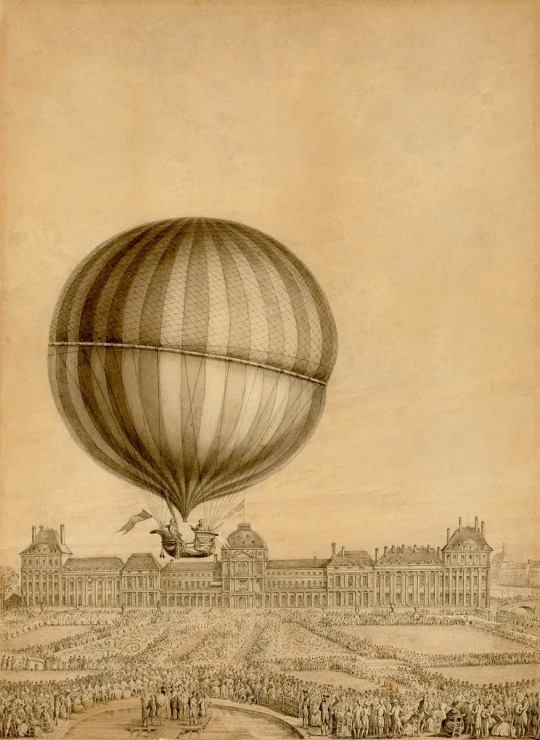
{WHF} {Ko-Fi} {Medium}
75 notes
·
View notes
Text

Lion of Lucerne is a memorial in Lucerne, Switzerland designed by Bertel Thorvaldsen and carved in 1820–21 by Lukas Ahorn.
The monument commemorates the Swiss Guards who lost their lives in 1792 during the French Revolution, when revolutionaries stormed the Tuileries Palace in Paris. The top inscription says Helvetiorum Fidei ac Virtuti which translates to "To the loyalty and bravery of the Swiss".
The monument depicts a dying lion impaled by a spear, covering a shield bearing the fleur-de-lis of the French monarchy. Next to him is another shield bearing the coat of arms of Switzerland. The inscription below show the names of the guards and provides the approximate numbers of soldiers who died (DCCLX = 760), and survived (CCCL = 350).
Mark Twain praised the sculpture of a mortally-wounded lion as "the most mournful and moving piece of stone in the world."
69 notes
·
View notes
Text
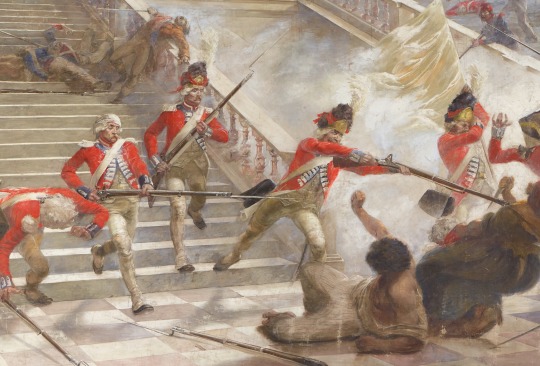
Storming the Tuileries, 10 August 1792 (detail) by L. Bang and O. Lorch
#tuileries#palace#swiss guards#french revolution#art#france#french#swiss#swiss guard#lucerne#switzerland#monarchy#history#europe#european#ancien régime#royalty#royal#royals#royal family#nobility#revolution#painting
36 notes
·
View notes
Text

There really is a whole genre of Napoleon standing in the Tuileries looking nonchalant during the French Revolution artwork
#Napoleon shitposting#Napoleon#napoleon bonaparte#Bonaparte aux Tuileries - 10 août 1792#Maurice Réalier-Dumas#19th century#napoleonic era#first french empire#napoleonic#french empire#frev#1792#french revolution#la révolution française#Tuileries#Tuileries palace#Swiss Guard#napoleon memes#Napoleon meme#history memes#history meme#France#France memes
145 notes
·
View notes
Text

Tuileries Palace after the arson during the 1871 Paris Commune
French vintage postcard
#palace#vintage#photography#tuileries#postkarte#french#carte postale#paris#postal#briefkaart#postcard#1871#old#commune#tuileries palace#photo#ansichtskarte#arson#paris commune#sepia#postkaart#ephemera#tarjeta#historic
40 notes
·
View notes
Note
what was the main royal residence in france prior to Versailles?
There were many, but the main one in Paris was the Tuileries Palace.
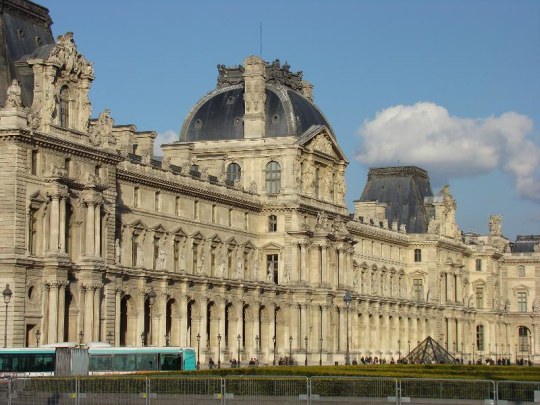
22 notes
·
View notes
Text
Behold! I've been writing my Spain/France fic. It's something that I've wanted to put to paper for a long time. It's not done yet. But uh... I still wanted to share. Mmm, yes. So, here you go! Have this snippet of things to come.
~~~
Paris, France; 24 February 1848
There is an omen on the horizon.
Spain pushes aside the heavy drapery of France’s flat to peer through the window at it: a plume of devilish smoke that snakes its way upwards into the heavens. It is distant, perhaps fifteen or twenty blocks away, which makes discerning the exact location difficult. Is the Tuileries Palace aflame, where he had spoken with the French king mere days ago? Could it be someplace else that has caught fire, like a guard post or a jailhouse?
A multitude of Parisian rooftops, chimney pots, and elegant blue dormers lie between him and the inferno. Still, it is much too close. In the pale light of a wintery midday, the grey harbinger snarls at him, its smokey teeth rippling with the blazing anger of rebellion and bending in the imperfect glass of France’s Palladian windows.
Spain frowns. He should have left the city long ago. Or, perhaps better yet, he should never have come at all.
16 notes
·
View notes
Text

The Eiffel Tower seen from the Jardin des Tuileries, Paris: The Tuileries Garden is a public garden between the Louvre and the Place de la Concorde in the 1st arrondissement of Paris, France. Created by Catherine de' Medici as the garden of the Tuileries Palace in 1564, it was opened to the public in 1667 and became a public park after the French Revolution. Wikipedia
153 notes
·
View notes